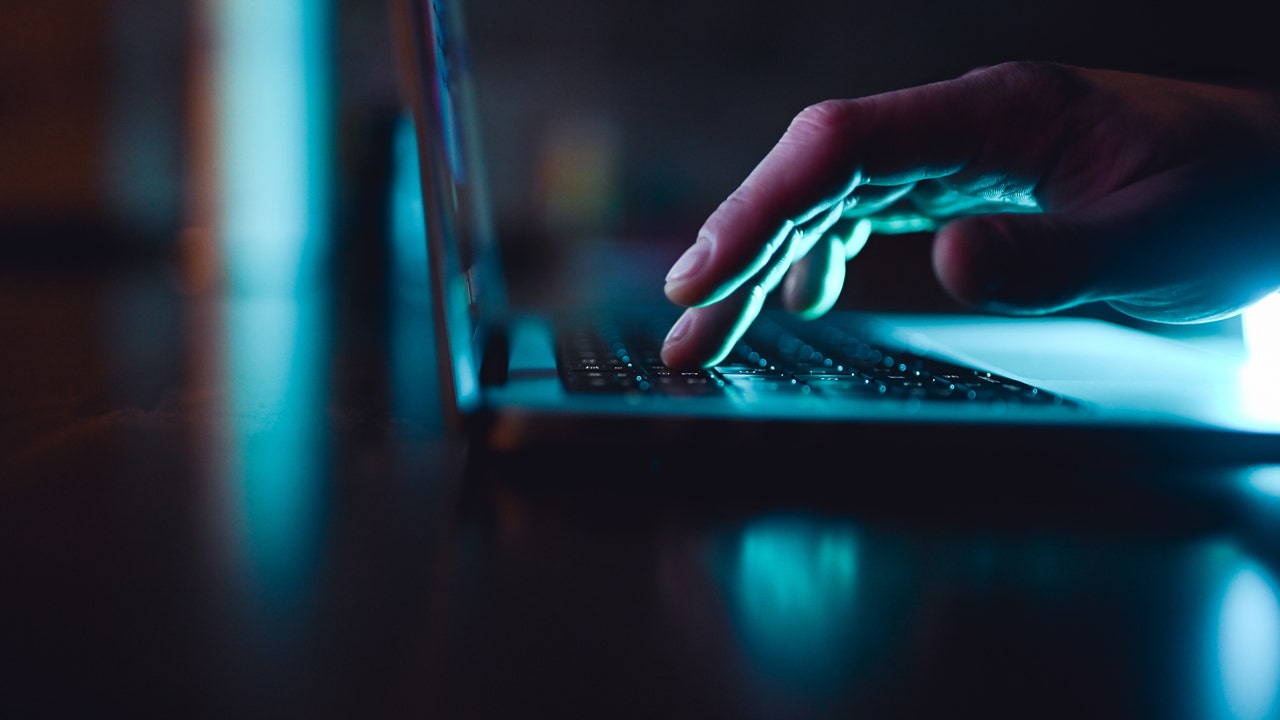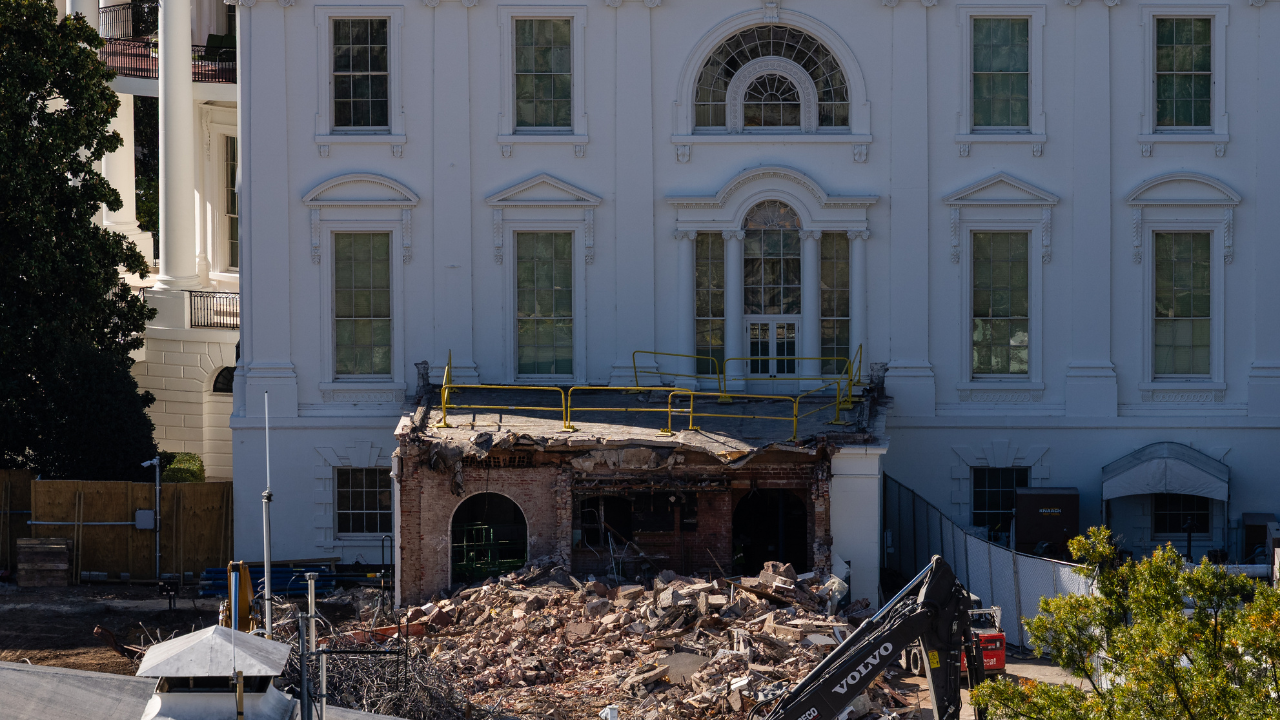Maine
How Maine Firefighter Put His Life Back Together After Traumatic Fall

It was a mid-life crisis in the truest sense of the term: one moment, 41-year-old Joe Almand was standing at the top of a cliff. The next moment, he was gone.
Up until that day in late July of 2022, Joe had been a firefighter for the town of Skowhegan in central Maine. Most of Skowhegan sits several dozen feet above the riverbank of the Kennebec River, which cuts a wide, deep path through the town.
Joe found himself at the top of that riverbank to retrieve a drone that had been lost by a videographer. It was the sort of good deed that came easily to the father of three — the kind of thing a firefighter in a small town is likely to do for a neighbor.
Joe remembers making his way through the bramble of trees at the edge of the bank. “It’s just a sheer cliff,” he told Inside Edition Digital. “Something gave way, and I just went over.”
Joe doesn’t remember those moments of going over and plummeting two-dozen feet, of landing on his wrists, breaking them instantly. He doesn’t remember how he broke the bones in his face, or his ribs, and he doesn’t remember how a broken rib punctured one of his lungs.
He does remember his first reaction after regaining consciousness: “I think I got a bloody nose.”
Meanwhile, a police officer who had been on scene called Joe’s colleagues at the Skowhegan Fire Department.
“’I don’t know where Joe is!’”
Captain Rick Caldwell, recounted the conversation between the officer and the fire chief. “’Our Joe?’ ‘Yeah, your Joe. He was just here and now I can’t hear him, I can’t find him. I think he’s fallen over the embankment.’”
With that, Caldwell and the other members of the FD mobilized to try to save their friend. “I can remember talking to myself, first thing was saying a prayer that Joe was going to be okay and that I’d make good decisions in helping him to get out,” Caldwell said.
The rescue was complicated. Caldwell had to rappel down the side of the bank to get to Joe. “My concern was that he might be paralyzed, but worse yet, bleeding out,” Caldwell said. “And I just remember telling myself what I preached to all the others, ‘Okay, stay calm, breathe and be a thinking firefighter.’”
When Caldwell reached the base of the cliff, he found his friend. “I got to Joe and I saw blood. I saw the blood coming out of his ears.”
As he started coming to, Joe began to yell, “Give me some fucking drugs!”
The team secured Joe in a sleeve, and rigged a system of ropes and pulleys to bring him up. Joe began to go into shock.
“We got him up, got him in the ambulance, felt like forever to me,” Caldwell admits.
Joe was sedated and taken by a Lifeflight of Maine helicopter to a hospital in Portland. His survival was not a certainty. “They weren’t necessarily sure if I was going to make it. It was pretty bad,” he said.
But he did make it. Joe woke up two days later and ended up spending twelve days in the hospital. He gradually came to understand the extent of his injuries. The worst blow may have been the one delivered several weeks later by his neurologist, who told Joe that he could never again work as a firefighter.
Joe had escaped with his life. But as he recovered and recuperated from the accident, he had to figure out what to do with that life.
“Right from the get-go, he was positive about getting better,” Caldwell observed of his buddy. “Instead of pity party about it and feeling bad for himself, he said, ‘No, I’ll do something else.’”
Inspiration came in the form of a joke. Joe was visiting a vacant storefront on Skowhegan’s main drag, Water Street. The property owner, a friend, wanted Joe’s opinion on what to do with the space, since the former firefighter had a background in construction. Joe recalls their conversation. “He jokingly said, he goes, ‘Well, what would you think about opening up a coffee shop?’”
Joe loved coffee, and he’d had a reputation in the firehouse as something of a cook. The idea took root. “We were driving down to my daughter’s graduation and talking to my wife and I was like, well, shoot, I have this idea of a coffee shop. Why don’t we just try that?… Let’s go for it and give it a shot.”
It was an inspiration grounded in Skowhegan.
“I wanted to give this space in the community, in our downtown to have people to be able to gather and sit, enjoy coffee, have some light food. Because in our downtown, it’s been a long time. There hasn’t really been that kind of community space.”
Joe started talking with friends and family, “figuring out how to make this happen.”
He began raising money, and with the property owner’s blessing, started working on the space. That was at first no easy task, as he had limited use of his broken wrists. Gradually, the money grew and the space took shape. “I had a vision of what I wanted this place to look like,” Joe said, and “I could see it myself in my head, like the colors and the way all the woodwork and all that stuff was going to be.”
Caldwell said, “He wanted that little extra touch to make it just a little extra special, which Joe is, fits him perfectly.”
Over the months, Joe’s vision began to take on a physical form: walls went up, floors were laid down, then moulding and wainscoting, and before long, the kitchen, the espresso machine and furniture. Joe shared that there were “lots and lots of late nights trying to get everything lined up and ready to go.” A spring 2023 opening proved to be overly optimistic, but not the summer. On the last day of July, Joe’s Flat Iron Cafe opened its doors.
“It was awesome,” said the new proprietor. “The amount of people that came out on the first day, it was almost overwhelming.”
Months later, the cafe continues to serve up its lattes and baked goods and sandwiches and cups of regular joe. It’s also serving, as Joe intended, as a meeting spot for people in Skowhegan, a place for making community.
The quality of the coffee has something to do with its success, but Rick Caldwell thinks it’s Joe himself. “Joe is a great example of just being grateful and thankful for the little things and looking for the positive out of it and moving forward and trying to make something better of it. And he doesn’t realize it, but so many other people, I think, benefited from his positive attitude.”
Joe does indeed radiate a good-natured positivity, and he credits that attitude for his recovery, for his ability to move on and do something completely different. He demurred before offering this piece of wisdom: “Don’t give up. There’s always something out there. Things can always get better. And on the other side of it, as friends and family or see somebody that’s having a hard time, help them out, give them a hand, because we can all make each other better.”
Joe’s Flat Iron Cafe is open Monday through Saturday from 6:00 a.m. to 6:00 p.m., at 65 Water Street in downtown Skowhegan, Maine. Says Joe, “You can’t miss us.”
Related Stories

Maine
Police searching for missing 16-year-old girl

Authorities in Maine are seeking a missing 16-year-old girl.
Lilyanna Rose Cook was last seen in Roque Bluffs, the Washington County Sheriff’s Office said. She may possibly be with a male and heading out of state.
Cook is described as 5’2 and about 120 pounds. She has blonde hair and blue eyes, as well as a nose ring, ear piercings and a rose tattoo.
She was last seen wearing black and white Jordan shoes, a white sweater off the shoulder, and a black and pink backpack with a rose on it.
Anyone with information is asked to contact the Washington County Sheriff’s Office at 207-255-8308.
Maine
Unusual geese are showing up in Maine. Here’s where to look.

It’s a great time for a wild goose chase. Insect-eaters are typically the first birds to skip town, migrating south. Seed-eaters linger a little longer. Waterfowl take their own sweet time.
As long as there is food in an ice-free pond, ducks and geese are happy to stay right here. Cold doesn’t bother them much, as anyone who has cooked a duck knows. They’ve got a fat layer of insulation that just won’t quit.
Goose-watching is like panning for gold. You’ve got to sift through a lot of sand to find a nugget. Canada geese are abundant. But there are sometimes strangers hiding among them. Many less common geese seem to be turning up this autumn, hiding in plain sight.
Snow geese appear regularly in Maine in autumn. They are abundant and extremely social, traveling and foraging in big flocks. They nest along the Arctic tundra edge clear across North America. In mid to late October, they migrate straight south, so most eastern Canadian breeders end up along the eastern seaboard. Central Canadian breeders winter along the Gulf coast. Western birds wait out the cold months along the Pacific.
Snow geese migrate at their leisure, stopping for long periods to feed on the sedges and tubers they love. There is so much of this food supply along the Saint Lawrence River above Quebec that the province started a Snow Goose Festival, appropriately named in French “Festival de l’Oie des Neiges.” Hundreds of thousands of snow geese pass through, most stopping off at Cap Tourmente National Wildlife Refuge.
These snow geese typically bypass Maine, choosing instead a route over Vermont, where they know their favorite food is waiting for them. Dead Creek Wildlife Management Area in Vermont is the core area to see hundreds of thousands at this time of year.
Next stop: Middle Creek Wildlife Management Area in Pennsylvania; then on to the coast, from Delaware to North Carolina.
Not surprising for an abundant species, some snow geese wander into Maine on their way south. They’ve been entertaining birders across the state. If encountered, take a second look. You might find a Ross’s goose. It strongly resembles a snow goose, though smaller and with a shorter bill.

Ross’s goose summers and winters in the central regions of North America. Vagrants in Maine are rare, but one popped up in Ellsworth a couple weeks ago. Another attracted a lot of attention in Bangor’s Maple Grove Cemetery three years ago.
A widespread species like the Canada goose typically has regional variation. In 2004, there were 11 recognized subspecies. That year, ornithologists decided the smallest subspecies was sufficiently different to declare the cackling goose as an official new species.
Cackling geese breed on the far northern edges of Canada and Alaska. In winter, they head south, mostly west of the Great Lakes. However, some wander. One turned up in Mars Hill Pond in Aroostook County a few weeks ago. Last Sunday, on a Maine Audubon-led field trip, seven birders enjoyed viewing a cackling goose at Arnold Brook Lake Recreation Area in Presque Isle.
That same field trip turned up a greater white-fronted goose at Lake Josephine in Easton. Greater white-fronted geese also breed in the far north, almost exclusively west of Hudson Bay. They winter west of the Mississippi all the way down to Louisiana. But a few visit Maine every autumn, so it’s not a surprise when one appears.

Pink-footed geese are a surprise. They breed on the far side of Greenland and winter in Northern Europe. In recent years, more have been visiting the eastern coast of North America. Those lucky Aroostook County birders turned one up at Lake Josephine. Besides Maine, there are currently pink-footed geese attracting attention in Connecticut, New Jersey, and Nova Scotia.
Perhaps the Holy Grail of goose-chasing is the barnacle goose. Its nesting range extends from Eastern Greenland to Siberia. However, any bird that can both fly and swim is not so shy about crossing water, and barnacle geese occasionally show up here. I enjoyed my first (and only) sighting in Houlton a few years ago. And, yes, I learned the pair was there, and scheduled a wild-goose chase to see them.

Barnacle geese are currently present in Québec and Nova Scotia. One was in New York in early October.
Birding in late autumn need not be dull. Songbirds may have headed for the tropics, but other birds have secretly taken their place. There are big flocks of Canada geese everywhere. Take a second look.
Maine
Maine legislative Republicans call for public hearing on Trump tax cuts

AUGUSTA — Republicans on the Legislature’s budget and taxation committees are calling for a public hearing in November on federal tax cuts signed by President Donald Trump in July.
The request follows a briefing last week in which state officials updated lawmakers on federal cuts to social service programs and the elimination of taxes on tips and overtime, among other changes.
Earlier this month, Gov. Janet Mills delayed making a decision on whether Maine would conform to the federal tax changes, saying it should be up to lawmakers to decide.
Mills’ office estimated all the tax cuts could result in a $400 million hit to the state budget.
But this week, Rep. Amy Arata, R-New Gloucester, said information from Maine Revenue Services provides a more precise breakdown for cuts that total about $108 million.
That includes adopting a $750 increase in the standard deduction ($31 million), a new $6,000 deduction for seniors ($31 million), eliminating taxes on overtime ($28 million), eliminating taxes on tips ($9 million) and a deduction on car loan interest ($9 million).
The cuts are part of what Trump formerly called the One Big Beautiful Bill that he signed into law July 4.
“We should have called our Tax Committee back July 5 and had a special session right after that to give people an idea of what their taxes are going to be,” Arata said.
After last week’s meeting, Democrats released a statement saying they need more time to review the impact of all the federal changes, which in addition to tax cuts, include cuts to food stamp benefits, Medicaid and healthcare subsidies.
“The decisions ahead are complex and will require careful analysis,” Sen. Peggy Rotundo (D-Lewiston) and Rep. Drew Gattine (D-Westbrook) said in a statement. “We are committed to working with colleagues, agencies and stakeholders to understand the implications and take responsible steps to protect the health and economic stability of our state.”
While the federal bill has been criticized for cutting taxes for the wealthy, Arata said the provisions Maine Republicans are most focused on are designed to cut taxes for working Mainers and seniors.
“I think the general public needs to let their voices be heard,” she said. “We hear a lot from lobbyists. Regular working people, a lot of times they don’t have a lobbyist. They have to be their own lobbyist. They have to reach out to legislators and let them know how they feel.”
-

 New York3 days ago
New York3 days agoVideo: How Mamdani Has Evolved in the Mayoral Race
-

 World6 days ago
World6 days agoIsrael continues deadly Gaza truce breaches as US seeks to strengthen deal
-

 News5 days ago
News5 days agoVideo: Federal Agents Detain Man During New York City Raid
-

 News5 days ago
News5 days agoBooks about race and gender to be returned to school libraries on some military bases
-

 Technology6 days ago
Technology6 days agoAI girlfriend apps leak millions of private chats
-

 Politics6 days ago
Politics6 days agoTrump admin on pace to shatter deportation record by end of first year: ‘Just the beginning’
-

 News6 days ago
News6 days agoTrump news at a glance: president can send national guard to Portland, for now
-

 Business6 days ago
Business6 days agoUnionized baristas want Olympics to drop Starbucks as its ‘official coffee partner’


















